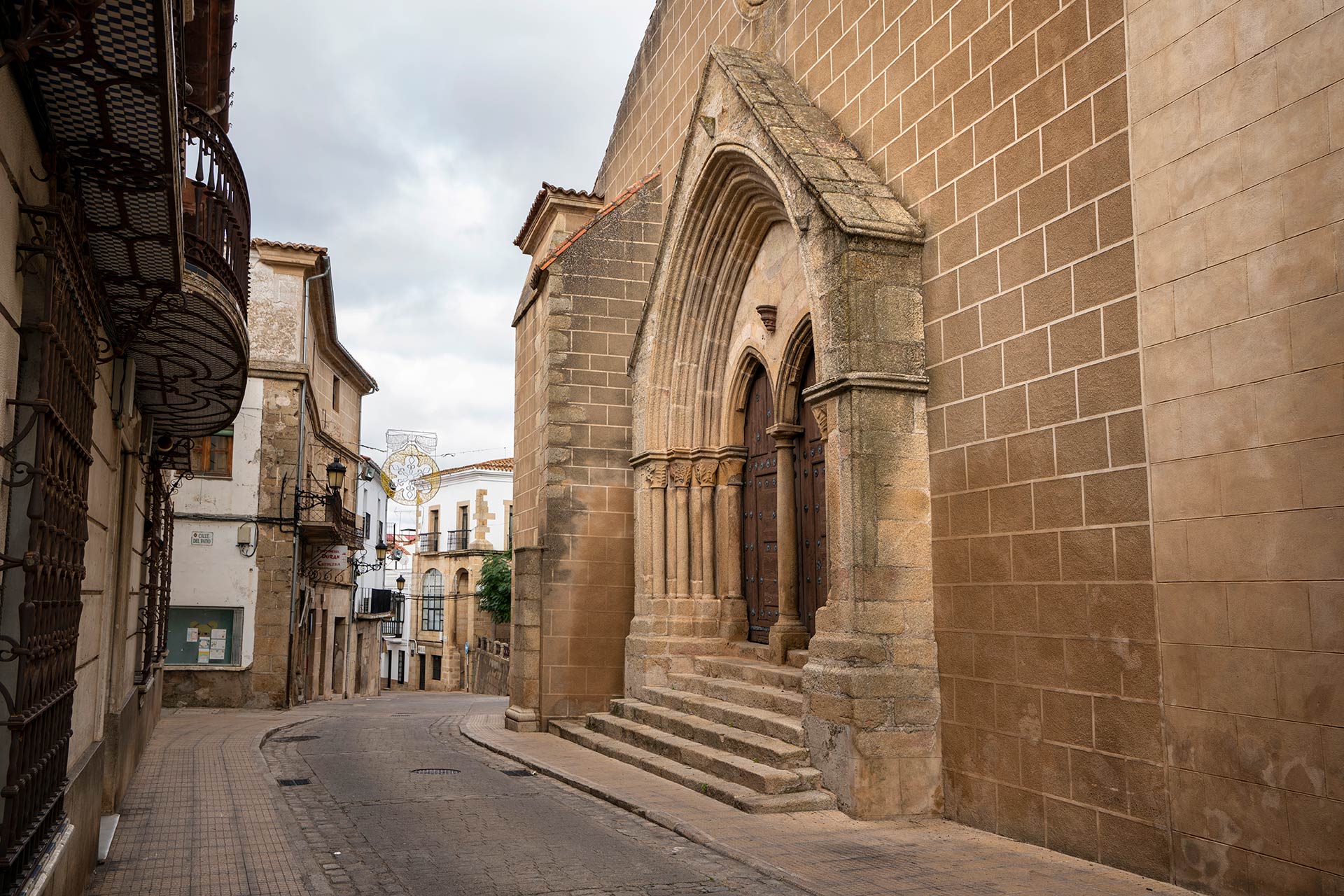Enjoy all of the art that it contains inside, such as columns, vaults, altarpieces, religious images and tombstones with their corresponding epitaphs. Let yourself be amazed by its tower, tile floors and the images in its interior.
This church was founded during a period of demographic and economic expansion for Valencia de Alcántara. It was considered finished in the middle of the 16th century but, from the beginning, it had significant structural problems that increased after it was seriously damaged in the following centuries, due to the various periods of war and Portuguese domination to which the town was subjected.
During the last refurbishment of the Church of the Incarnation, the original vaults were replaced by the ones that can be seen today, which are much more robust, and the side of the church was reinforced with 5 buttresses. It is a stonework building with three main doors: one that faces West, another to the South and the last one facing North and the Plaza de la Constitución Square.
Inside you can see the aforementioned floors with stone slabs, whose origin may well be from the former Temple of Santiago, which was destroyed during the wars with Portugal, and a wooden choir on stone pillars. It is also worth noting the three Baroque altarpieces, one of which is located in the apse of the central nave presided over by the Christ of the Good Death.
Furthermore, every 15th May the celebrations of Saint Isidro Labrador are held in this church, a festivity (declared a Regional Festival of Tourist Interest) that was started by people who worked in the fields in the 1940s as a tribute to their employer. The neighbours dressed in their traditional costumes and made offerings to the saint and, later, the farmers and ranchers walked through the streets of the town carrying the image of the saint in a procession. Since then, this celebration has only grown more popular over the years.









